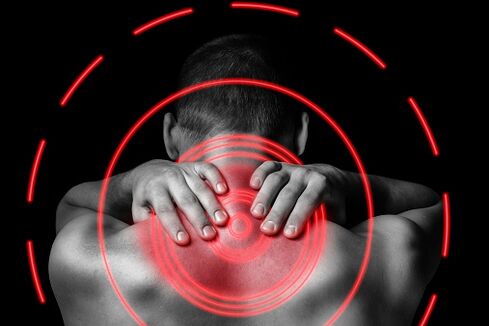And how much time we spend sitting in transport or at the table!So, we pay for it with various diseases, the leader among which is cervical osteochondrosis.So what do we do with it?

It's different for everyone
Cervical osteochondrosis is not a flu that "attacks" suddenly: pathological changes in the vertebrae develop slowly, "mature", gain strength.And, as a rule, we don't pay attention to the first signals, because we don't know anything about them.Experts say that if you suddenly feel that it has become uncomfortable to sleep on a high pillow or your hands start to feel numb and cold for no apparent reason, then it's time to see a doctor.
Since we are all different, everyone has their own "specific" manifestations of the disease.But if the "process has started", most often the following symptoms "signal" that the problems have started:
- paroxysmal, painful headache, which usually begins in the back of the head and then spreads to the crown and temples;
- pain in the shoulder, forearm, hands;
- numbness, tingling, tingling in the hands or feet;
- dizziness and even fainting when suddenly turning the head;
- tinnitus;
- sometimes pressing pain in region of heart, radiating to scapula and forearm.In osteochondrosis, unlike angina pectoris, it can exist and even intensify for several days.
Don't step on the same rake!
We have to learn to live together with any chronic disease, and cervical osteochondrosis is no exception: periods of relative peace are replaced by exacerbations, which we ourselves often cause.That's why we learn to "hold the line" - to avoid situations that could provoke another attack.
Which one exactly?Do not read or watch TV while lying in bed, so as not to overload the cervical vertebrae.Be careful with household chores that require you to keep your head tilted or, conversely, bent down for a long time: for example, pasting wallpaper or weeding flower beds with your favorite flowers is not for you.
While sitting at the computer, take a break every half hour to give your neck a chance to rest.Do not turn your head all the way while driving.And in general, always and everywhere avoid sudden, impulsive movements of the head and neck.
The Fab Five
It is impossible to get rid of cervical osteochondrosis forever, regardless of what effective treatment methods are promised to you.But minimizing the "visit" of an unpleasant guest is quite possible.
To prevent attacks and exacerbations, do special exercises twice a day.It will take very little time.Here are five simple exercises, do them while sitting on a chair with your back straight.
- Tilt your head slightly forward and place your palms on your forehead.Press your head into your hands.Stay in this position for 10 seconds.Repeat the same, pressing your fingers to your temples.And now - on the back of the head.
- Sitting on a chair, lower your arms to your body, pull your head back and slowly turn it to the left.Freeze in this pose for 30 seconds.Repeat the exercise by turning your head to the right.
- Raise your shoulders, trying to reach your ears.Stay in this pose for 10 seconds.Lower your shoulders, take a deep breath, relax for 10-15 seconds.Repeat the same, raising one shoulder and lowering the other.
- Lower your head, trying to press your chin to your chest.Repeat 5 times.
- Smoothly tilt your head back, forward, left, right.Repeat the movement in each direction three times.
Let's pet him, let's warm him?
Self-massage also helps to activate neck muscles, improve their blood supply and metabolic processes.It is not at all difficult and does not take more than five minutes, the main thing is that the massage is done daily.So shall we begin?
Take a comfortable position on the chair and relax.Press four fingers of your palm on the back of your head, caressing it from top to bottom.Repeat 3-4 times.
Do the same, but more vigorously, massaging the back of the neck with just your thumbs.
Using a circular, rotating motion (again, using only four fingers of each palm), rub the neck along the sides of the occipital bone, moving downward along lines that run parallel to the spine.
Stretch the muscles of the neck: first on the right side, grasp the muscle with the thumb and four more with the left hand, squeeze it slightly and move the thumb towards the palm.Repeat the same on the left side of the neck, working with the right hand.
Finally, finish the massage by gently stroking the neck from top to bottom.
Don't just rely on yourself
Prevention is very good, but with osteochondrosis, you will have to surround your own neck with the attention of a doctor.Especially if you are over forty.Time changes us not only from the outside, but also from the inside - pathological changes in the cervical spine are accelerating, and here the number one task becomes "monitoring" its condition.
The arteries that supply the brain with blood pass through the cervical spine.Blood supply disorders caused by vascular compression lead to unpleasant complications.One of the most common is associated with changes in the hypothalamus, a special department that is "responsible" for emotional state, metabolism, blood pressure, activity of the cardiovascular system and much more.
This leads to insomnia, irritability, memory loss, severe migraines and blood pressure spikes.
If you want to help yourself, get tested.X-ray of the cervical spine allows monitoring of bad changes;in order to clarify the diagnosis, magnetic resonance imaging, dopplerography of the cerebral vessels and some other examinations are performed.

















































